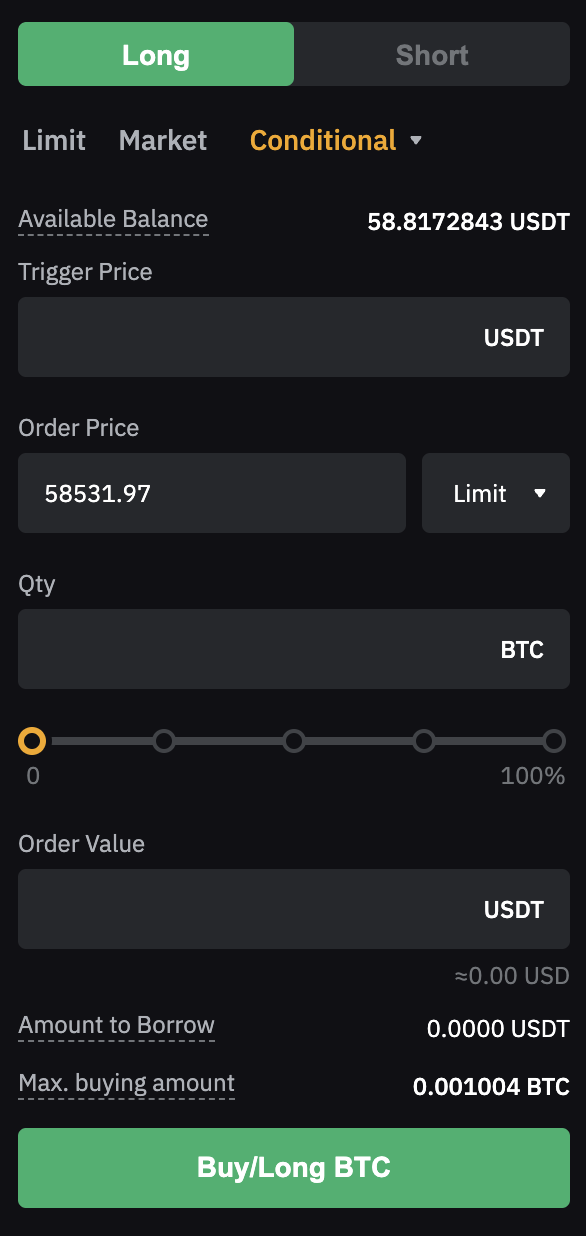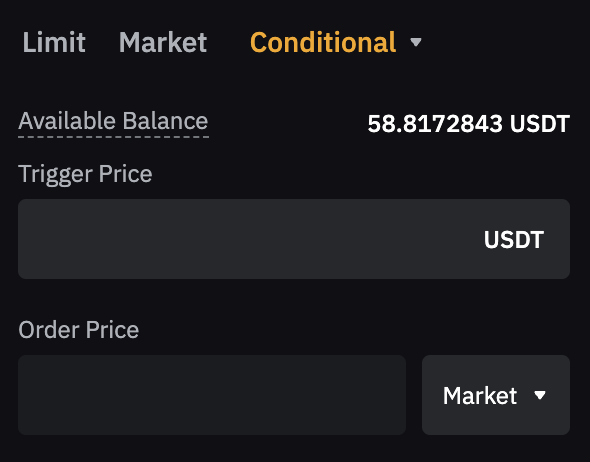Bybit Conditional Order Explained
The most common order types are limit and market orders, but these do not fulfill the needs of every trader or investor. Some traders need more advanced ways when it comes to placing their orders on a cryptocurrency exchange. In this article, we'll explain one of those advanced order types, specifically a conditional order.
What is a conditional order
A conditional order is an order that will only be executed once the trigger price is met. The trigger price is the price a certain asset needs to meet before the order will be executed or placed in the order book, depending on whether you choose a limit or market order. The video below illustrates executing a conditional order on Bybit.
To elaborate, a limit order is an order that will only be executed when the asset reaches the limit price. A market order is an order that will be executed directly at the best available market price. A conditional order is a limit or market order that will be executed once a trigger price is met. So there is one extra condition before the order will be placed or executed. Let's have a look at the order settings.
Conditional Order Settings

As you can see in the image above, the first thing you need to fill in when placing a conditional order on Bybit is the trigger price. Let's say the price of Bitcoin is $50.000, and you set the trigger price at $60.000, that means that the order that you create will only be executed/placed when the price of Bitcoin first reaches $60.000. So if Bitcoin does not reach that price, the order will never be placed.
Secondly, you'll need to set the order price, only if you want to place a limit order once the trigger price is met. So let's say, when Bitcoin breaks above $60.000 you expect the Bitcoin price to go to $70.000. You can set the trigger price at $60.000, and then the order price at $59.900. So once Bitcoin reaches a price of $60.000, a limit order will be placed in the order book at $59.900. So Bitcoin needs to touch $60.000, then drop to $59.900 for your order to be filled.
There is an easier way, with a market order. A market order is always executed instantly. As you can see in the image below, with a market order, you don't need to specify an order price.

So if we use the same example as we did with the limit order, when Bitcoin reaches $60.000, your order will be directly executed at the best available market price. This will ensure you are in that position, whether with a limit order, you might get a better entry price, but you're not secure about buying that Bitcoin (or selling).
Why do traders use conditional orders?
Often when an asset reaches certain levels, it can spike a reaction in the price. For example, when Bitcoin is breaking key support levels, the chances of the price dumping further increases. Traders want to capitalize on these moments using conditional orders. So there are mainly two reasons why traders use them:
- To automate their trading (so they don’t have to be on their phone/laptop)
- To react when markets reach certain levels
If the price of Bitcoin is, $50.000 and you would like to buy at $45.000, you don't need a conditional order as you can just set a limit order in the order book at $45.000. The same goes when you want to sell higher, let's say at $55.000, you can just set a sell limit order at that level.
Conditional orders are really for "if this then that" situations. If Bitcoin breaks key support, there is no other way to automatically short than to use a conditional order. Or when Bitcoin breaks key resistance, and you want to open a long automatically, you need a conditional order.
Conclusion
Conditional orders have some advantages, traders can automate their trading while being away from their phone or laptop and traders can react to the markets whenever they reach important levels. Many professional traders are using conditional orders as it is an important part of their strategy. Most exchanges, including Bybit, are offering conditional orders to their users.